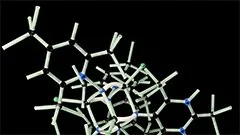Introduction
Welcome to this comprehensive course on the eukaryotic cell, a fundamental unit of life in the kingdom of Eukarya. The eukaryotic cells are characterized by their complex structures, including a true nucleus and membrane-bound organelles, such as mitochondria, ribosomes, Golgi apparatus, and endoplasmic reticulum. This course aims to provide an in-depth understanding of the essential features, functions, and diversity of eukaryotic cells.
Origin and Classification of Eukaryotes
The origin of eukaryotes is believed to have occurred around 1.5 billion years ago through endosymbiosis, where prokaryotic cells engulfed other prokaryotic cells, leading to the evolution of mitochondria and chloroplasts as organelles within the host cell. Eukaryotes are classified into five main kingdoms: Animalia, Plantae, Fungi, Protista, and Stramenopiles. Each kingdom exhibits unique characteristics, adaptations, and diverse morphologies that reflect their distinct roles in ecosystems.
The Eukaryotic Cell Structure
The Nucleus
The eukaryotic cell's most prominent organelle is the nucleus, which contains the cell's genetic material (DNA) and plays a crucial role in DNA replication, transcription, and protein synthesis. The nucleus consists of a nuclear envelope, nuclear pores, chromatin, and a nuclear matrix.
Chromatin and Genes
Chromatin is the complex of DNA, proteins (histones), and other molecules that make up the chromosomes within the cell's nucleus. In an interphase cell, chromatin appears as a less densely packed form known as euchromatin, which allows for active gene transcription. During the cell cycle, chromatin condenses into a highly organized structure called heterochromatin, preparing for DNA replication and mitosis.
The Cell Membrane and Cytoplasm
The cell membrane, also known as the plasma membrane, is a selectively permeable phospholipid bilayer that encloses the entire eukaryotic cell and organelles. It regulates the movement of molecules into and out of the cell while maintaining its shape and protecting internal components. The cytoplasm is the fluid-filled region within the cell membrane, containing various organelles, proteins, and ions that perform essential cellular functions.
Mitochondria
Mitochondria are semi-autonomous organelles responsible for producing adenosine triphosphate (ATP) through cellular respiration. They contain their DNA and ribosomes, allowing for local protein synthesis to meet energy demands. The outer mitochondrial membrane surrounds the inner mitochondrial membrane, which houses cristae, intricate folds that increase the surface area for ATP production.
Ribosomes and Protein Synthesis
Ribosomes are small organelles composed of RNA and proteins that function as the cell's protein-synthesizing machinery. They bind to mRNA, transferring amino acids in a specific sequence according to the genetic code, resulting in the formation of proteins. Protein synthesis occurs both in the cytoplasm and on the rough endoplasmic reticulum (ER).
Endoplasmic Reticulum (ER) and Golgi Apparatus
The endoplasmic reticulum (ER) is a network of membranes that provides a platform for protein synthesis, lipid biosynthesis, and the modification of proteins and lipids. The ER can be rough (covered with ribosomes) or smooth (without ribosomes).
The Golgi apparatus modifies, sorts, and packages proteins and lipids for transport to their final destinations within the cell or to other cells via vesicles. It is composed of cisternae, flattened sacs arranged in stacks.
The Cytoskeleton
The cytoskeleton is a network of protein filaments that maintains the cell's shape, allows for intracellular transport, and participates in cell division. It consists of three primary components: microtubules, actin filaments (microfilaments), and intermediate filaments.
Cell Division and Growth
Cell division is essential for growth, development, tissue repair, and asexual reproduction. Eukaryotic cells undergo two main types of cell division: mitosis and meiosis. Mitosis results in two identical daughter cells, whereas meiosis produces four genetically unique gametes. The cell cycle consists of interphase (G1, S, G2) and mitosis (M-phase), during which the chromosomes are replicated and distributed to the new daughter cells.
Cell Communication and Signaling
Cells communicate with each other through various signaling pathways that allow for coordinated responses to external stimuli and internal cues. These include chemical signals, such as hormones, neurotransmitters, and growth factors, as well as physical interactions, like gap junctions and cell adhesion molecules.
Eukaryotic Cell Diversity
Eukaryotic cells exhibit remarkable diversity in their morphology, physiology, and function across the various kingdoms. For example, amoebae are motile, single-celled organisms that can change shape to move, while diatoms are unicellular algae with intricate silica shells. Understanding this diversity is crucial for appreciating the adaptability and complexity of eukaryotic cells in their respective habitats.
Conclusion
This course has provided an overview of the essential features, functions, and diversity of eukaryotic cells. By understanding the intricate structure and mechanisms of these cells, we can appreciate their role as fundamental units of life and gain insight into their roles in various biological processes.
MCQ: Test your knowledge!
Do you think you know everything about this course? Don't fall into the traps, train with MCQs! eBiologie has hundreds of questions to help you master this subject.
These courses might interest you
Create a free account to receive courses, MCQs, and advice to succeed in your studies!
eBiologie offers several eBooks containing MCQ series (5 booklets available free for each subscriber).




